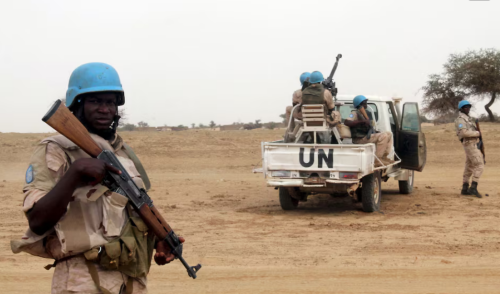Why UN Peacekeeping Camps Require Containerized, Top-Loading Incinerators
Rapid Deployment & Portability
Peacekeeping missions like UNMISS (South Sudan), MINUSCA (Central African Republic), or MONUSCO (DR Congo) often establish or relocate camps in remote, conflict-affected, or insecure areas.
-
Containerized incinerators are built into standard 20ft or 40ft shipping containers, allowing easy transport by truck, rail, or even ship/air.
-
No need for complex foundations or large civil works: they can be offloaded and operated quickly.
-
Camps often move, expand, or close down – a containerized unit can be redeployed to the next site.
Protection & Durability
Camps face harsh weather, dust, and security risks:
-
The steel container shell shields equipment and electronics from rain, wind, sandstorms, and even occasional vandalism.
-
Improved safety: reduces exposure of hot surfaces to personnel.
-
Container also serves as a locked housing, protecting burners, control systems, and spare parts.
Controlled Waste Handling: Top Loading Design
Peacekeeping and humanitarian camps produce mixed solid waste: medical waste, food scraps, packaging, plastic, and sometimes hazardous biological waste.
-
Top loading design allows direct disposal of waste from trolleys or bins without complex conveyors.
-
Simplifies operation: less manual handling, reducing staff exposure to infectious or hazardous waste.
-
Large feeding door can accept bulky items, cartons, or packaging materials common in field logistics.
Capacity Matches Camp Needs
Typical large camps or regional field hospitals generate around 180–220 kg/hour of solid and medical waste:
-
A 180 kg/h unit (e.g., HICLOVER TS200) suits medium camps, small hospitals, or specialized bases.
-
A 220 kg/h unit (e.g., HICLOVER TS300) fits larger headquarters camps or logistics hubs.
-
This scale balances daily capacity with manageable fuel use and cost.
Regulatory & Environmental Compliance
UN, WHO, and international standards require:
-
Two combustion chambers, secondary chamber ≥ 1000°C, ≥ 2 seconds residence time.
-
Automatic burners and temperature monitoring.
-
Wet scrubber or dry filtration options to reduce dust, acid gases, and dioxin risk.
Containerized incinerators can integrate all these into a compact, pre-engineered solution.
Maintenance & Spare Parts
Peacekeeping operations are often far from suppliers:
-
Container units keep burners, control panels, and spare parts inside a protected environment, reducing failures.
-
Easier to stock spare burners, sensors, and pumps within the container.
-
Simplifies wiring and plumbing: built at the factory, tested before shipping.
Summary: Why Peacekeeping Missions Choose Containerized, Top-Loading Incinerators
-
Mobility & fast deployment anywhere
-
All-weather protection and security
-
Simple top-loading for mixed waste
-
Designed capacity matches camp scale
-
Built-in compliance with UN & WHO standards
-
Lower maintenance needs and easier support
This is why containerized incinerators in the 180–220 kg/hour range are the practical and preferred choice for UN missions, oil & mining camps, and other remote field operations.
If you’d like, I can also help craft this into a formal white paper or website page text. Just let me know!

